All About Aperture
Welcome back to our free food photography series! I have enjoyed hearing from all of you about what you’d like to learn, as far as food photography goes. I don’t pretend to be an expert, but I have learned a lot since I started blogging, and I’m excited to learn, right along with you! 🙂 Don’t forget to check out our other tutorials about basic light and shutter speed. Today’s subject is . . . (drum roll) . . . APERTURE.
Apple what? Apple pie? Apple fritters?
Not apple. Aperture. Aperture is kind of like the “eye” of the camera– and how wide open the eye is for the photo. Try a little experiment– squint your eyes. See how dark everything gets? Now open your eyes even wider than they normally go. Everything gets brighter. This is the basic way that aperture works– wider open equals more light, and smaller/more closed equals less light. See? You’re already an expert. You’re so smart.
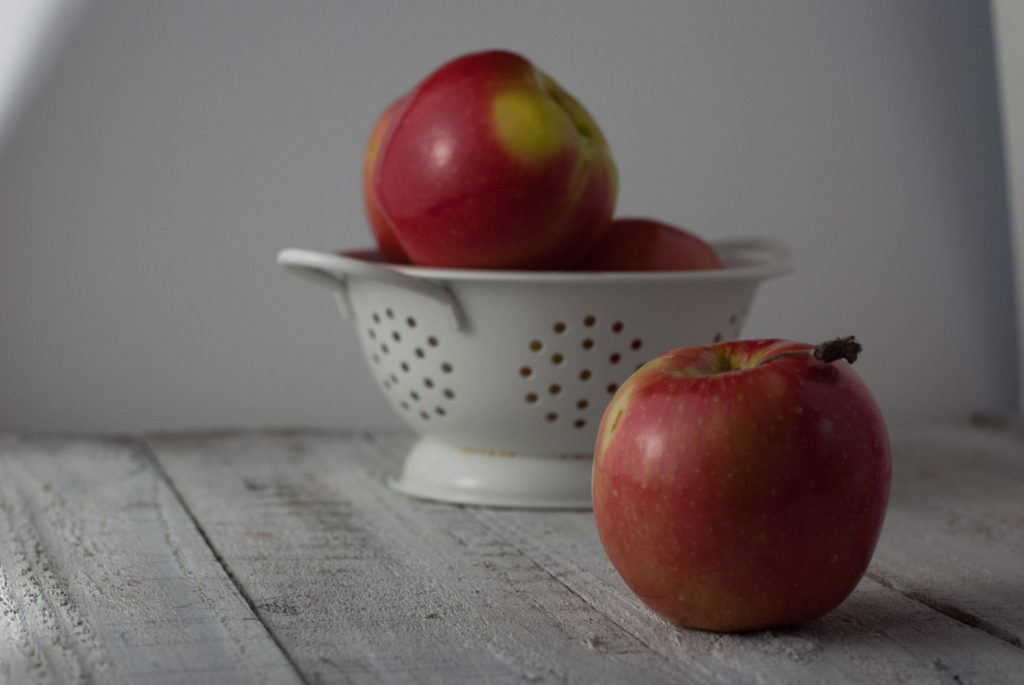
Aperture is measured in units called “f-stops.” Basically, think of these “stops” as stations on a train route. Your camera will open or close based on how many stops it has gone forward or backward.
Now, this part seems super weird, so stick with me.
The smaller your f-stop number, the larger your aperture.
Um . . . what???
You don’t have to understand all the scientific mumbo jumbo behind this. Just know that SMALL f-stop means WIDE aperture (eye). Let me show you what I mean. I grabbed some random fruit and took its picture for you. The three “relay runners” of a good photo are shutter speed, aperture, and ISO. Just like in a regular relay, if one member is slower, then the others need to speed up to take up the slack. So normally I would adjust my shutter speed or ISO to compensate for this changing aperture. But for our purposes, I left the shutter and ISO the same, so you could see exactly what happens when you change only the aperture.
I started out with my aperture “eye” as tiny and small as it could be. And remember, this means that the f-stop number is HIGH, because the aperture opening is SMALL. It’s like salt and watermelon . . . you don’t have to understand it to appreciate it. 😉
This first apple photo has my aperture as tiny as it can go with my lens, which is a 5 (large f-stop number is a tiny aperture, remember?). The correct way to write this aperture notation is f/5. This just means that your f-stop is 5 (which means aperture eye is tiny and not letting in a lot of light). The photo is a little on the dark side (Come over to . . . the DARK side! *evil music plays in background), because the tiny eye isn’t letting in much light.
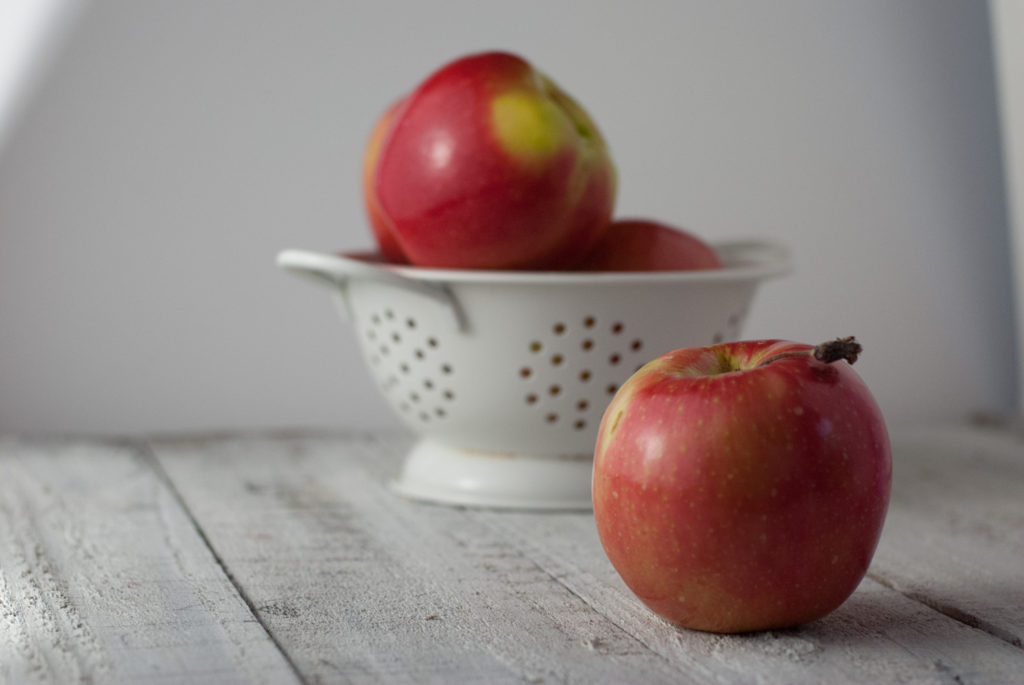
Now, let’s open the aperture a little bit wider. This is kind of like opening your camera’s “eye” from a squinting little slit to almost open normally. As our aperture gets larger the f-stop goes down, so this is a setting of f/4. Our f-stop number went down from f/5 to f/4, and our “eye” opened a little more. Notice how the photo got a little bit lighter? Yep. Wider camera eye equals more light in your photo. Again . . . you are just too smart for your own good.
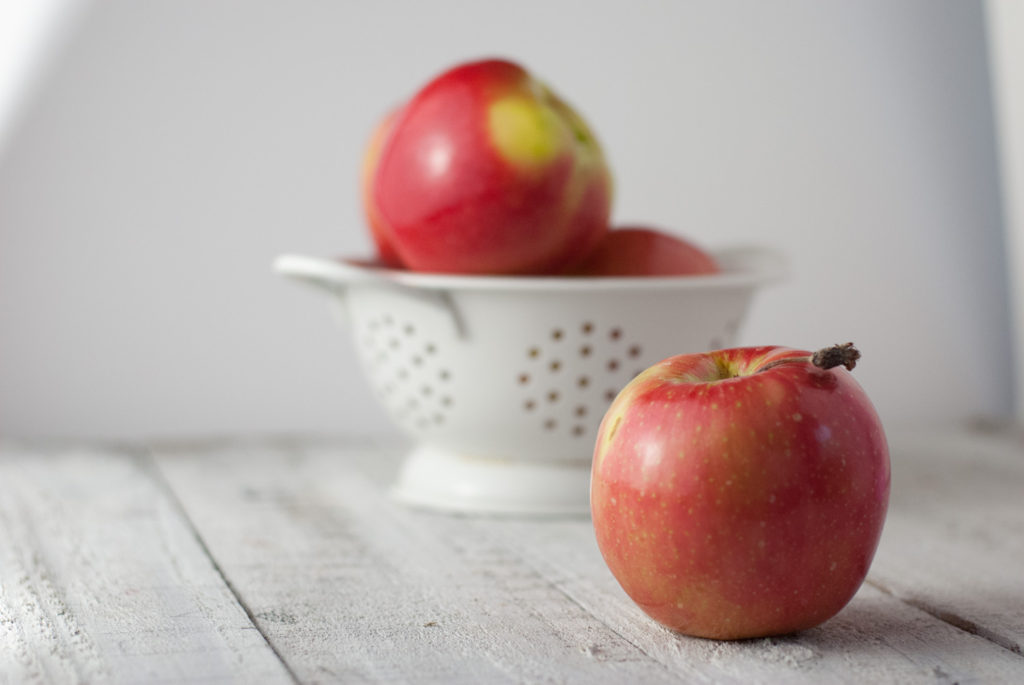
Next, let’s open our aperture even more. This setting is f/3.2. If you’re wondering why I didn’t do just, say, “3,” know that the f-stop numbers aren’t always exact numbers– and 3.2 is the closest setting to 3 that my lens has. No worries. As you widen the aperture, your camera will jump to the numbers it has available, automatically.
Now, I want you to notice 2 things. As we opened our aperture eye wider (and the f-stop went lower), the photo is getting brighter and brighter. But look what else is happening . . . do you notice how our focus point is getting smaller, and the blur around the edges is getting more pronounced? Yep. The wider open your lens “eye” gets (and the smaller your f-stop number gets), the bigger your background blur.
So if you want a photo that is razor sharp on, say, your child’s eyelashes, with the sweet little curls on her head blurry, then you want a nice, wide-open aperture. Yep. No more paying someone to take your Christmas photos. Save your money and “do it yo-self!” You’re welcome. 😀
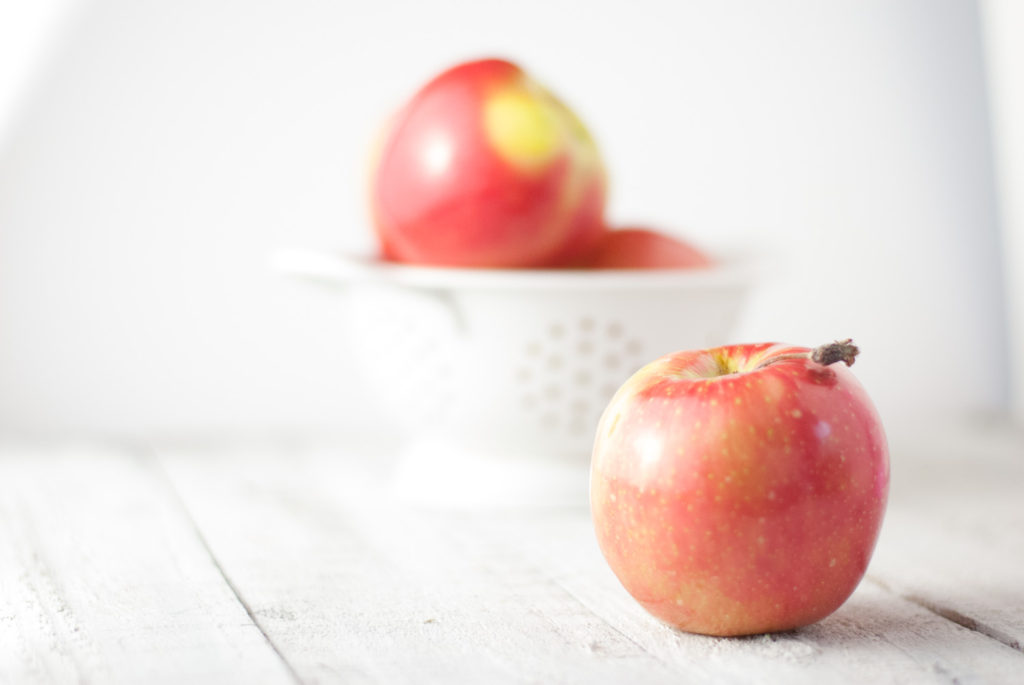
This is my aperture open almost as wide as my lens will go– at f/2. See how bright the photo is, with the lens open so wide? Also, there is just a teeny little bit of the apple in focus, with everything else nicely blurred. Let me adjust the shutter speed and darken the photo a bit, so you can see how blurry the photo background is with f/2 aperture.
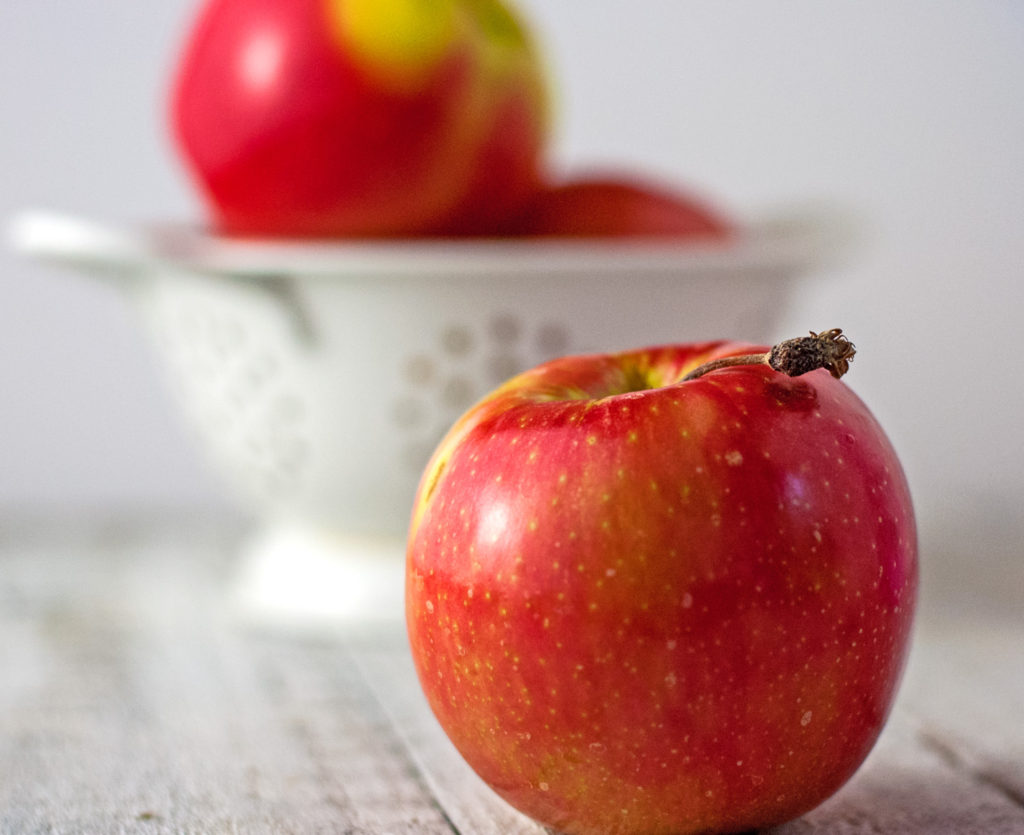
Personally, I just love pictures like this– with low f-stops and wide-open apertures. I love the ultra-crisp focal point and beautiful, creamy backgrounds with that beautiful blur. Sometimes, even if I have plenty of light, I will open up my aperture and compensate with a faster shutter speed, just to get that blur.
Let’s check out this knowledge in real life.
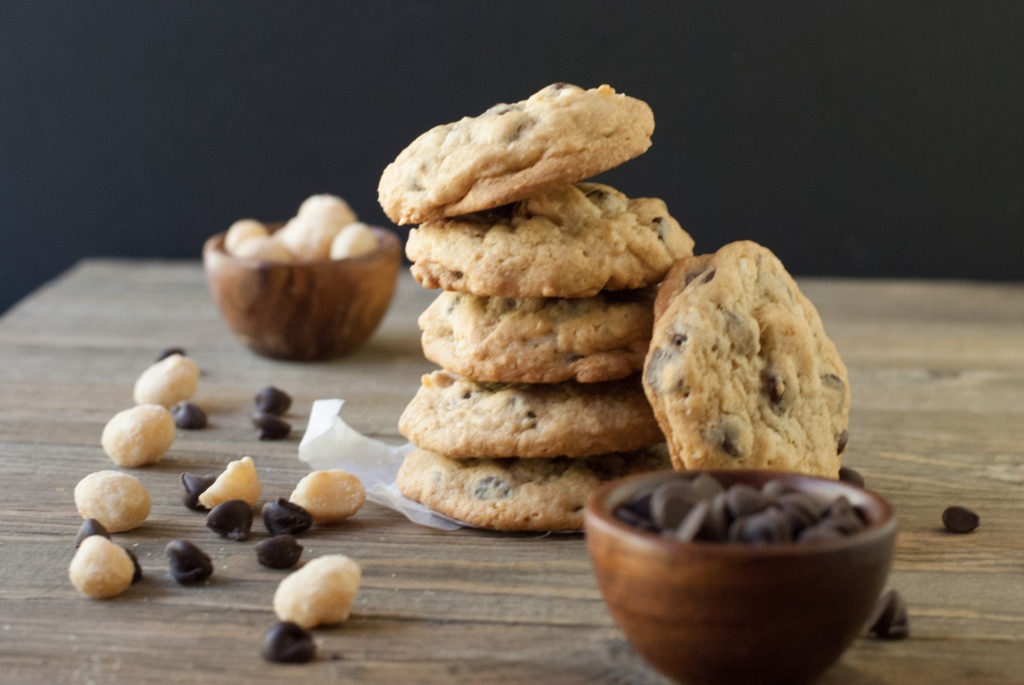
These are a few unedited photos that I took JUST FOR YOU (cue: Awwwww!!!!) on my recent recipe for $10,000 cookies. I started out with an aperture of f/5. Remember, the higher our f-stop number, the smaller the aperture opening. So this is a photo with my aperture as tightly closed as it will go without actually being completely closed. See how, for the most part, the cookies and chocolate chips/macadamia nuts are in pretty nice focus? The wooden bowls are a little blurry but still not too bad.

This is my aperture opened to f/3.2. This means that my “eye” is opened wider, which means that my blur will increase. See how the chocolate chips and nuts, especially the ones in the bowls and the ones on the top of the photo, have gotten blurrier?

This shot is taken with my lens as wide open as it will go– f/1.8. You can buy lenses that open even wider than this, but the more refined your lens, the more $$$ it becomes, and I find that the 1.8 size works just fine for me. See how almost the whole circular background area is blurred? See how incredibly blurry the chocolate chips in the bowl up front are? Yep. Wider aperture means blurrier background and teeny focus point.
So, to recap:
- The lower your f-stop number, the wider open your lens/aperture.
- The wider open your aperture, the brighter your photo.
- The wider open your aperture, the tinier your focus area, and the more blurred your background.
Awesome! You did it! Now get out there and test out your aperture settings! I can’t wait to see what awesome creations you come up with, and, as always, I love to hear your thoughts and topics that might be of interest to you as we learn! 🙂
You did it. And I’m just so proud of you.

Disclosure: This post may contain affiliate links, which just means that we get a few pennies if you purchase through our link. I never recommend products that I don't personally use and love. Thanks!
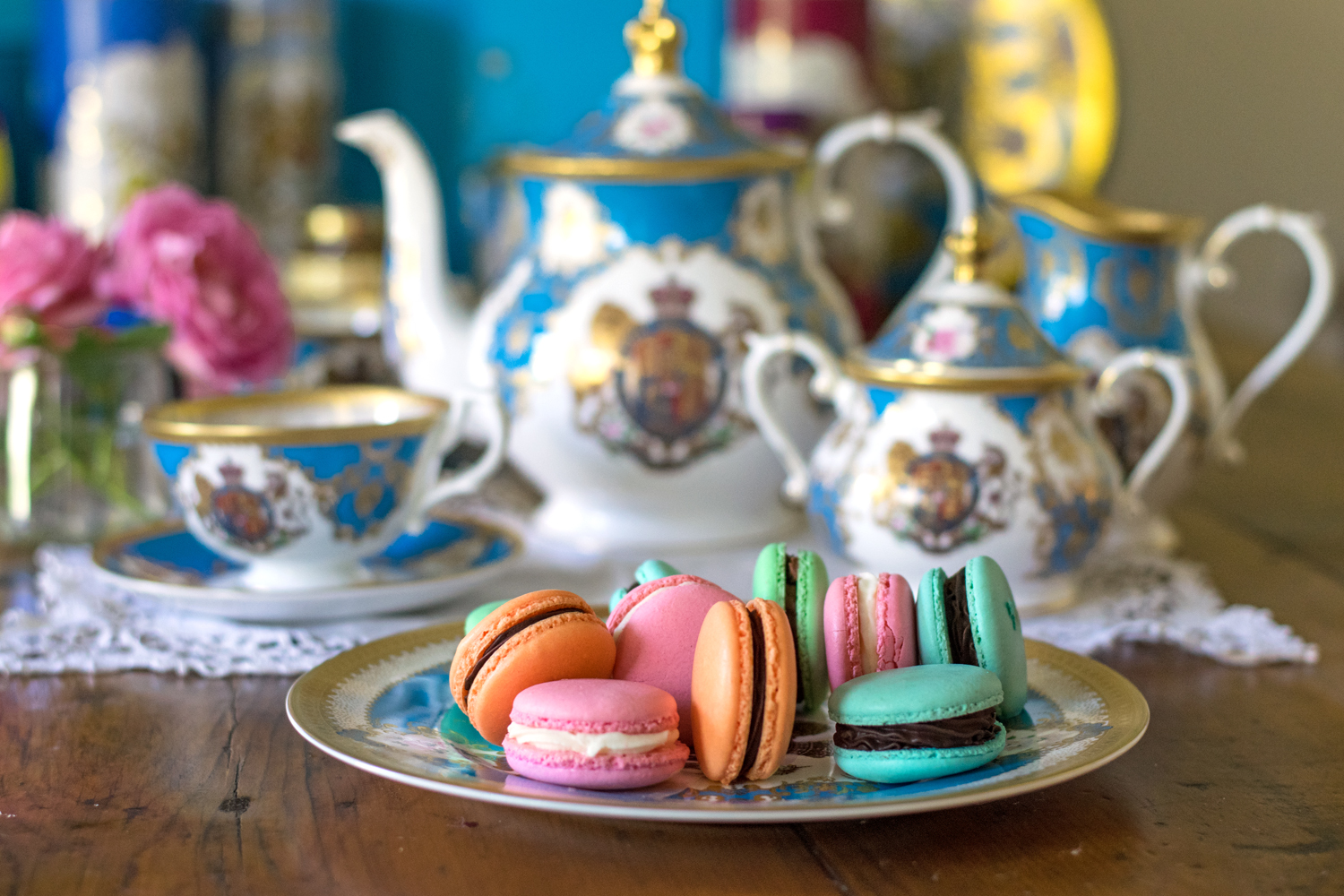
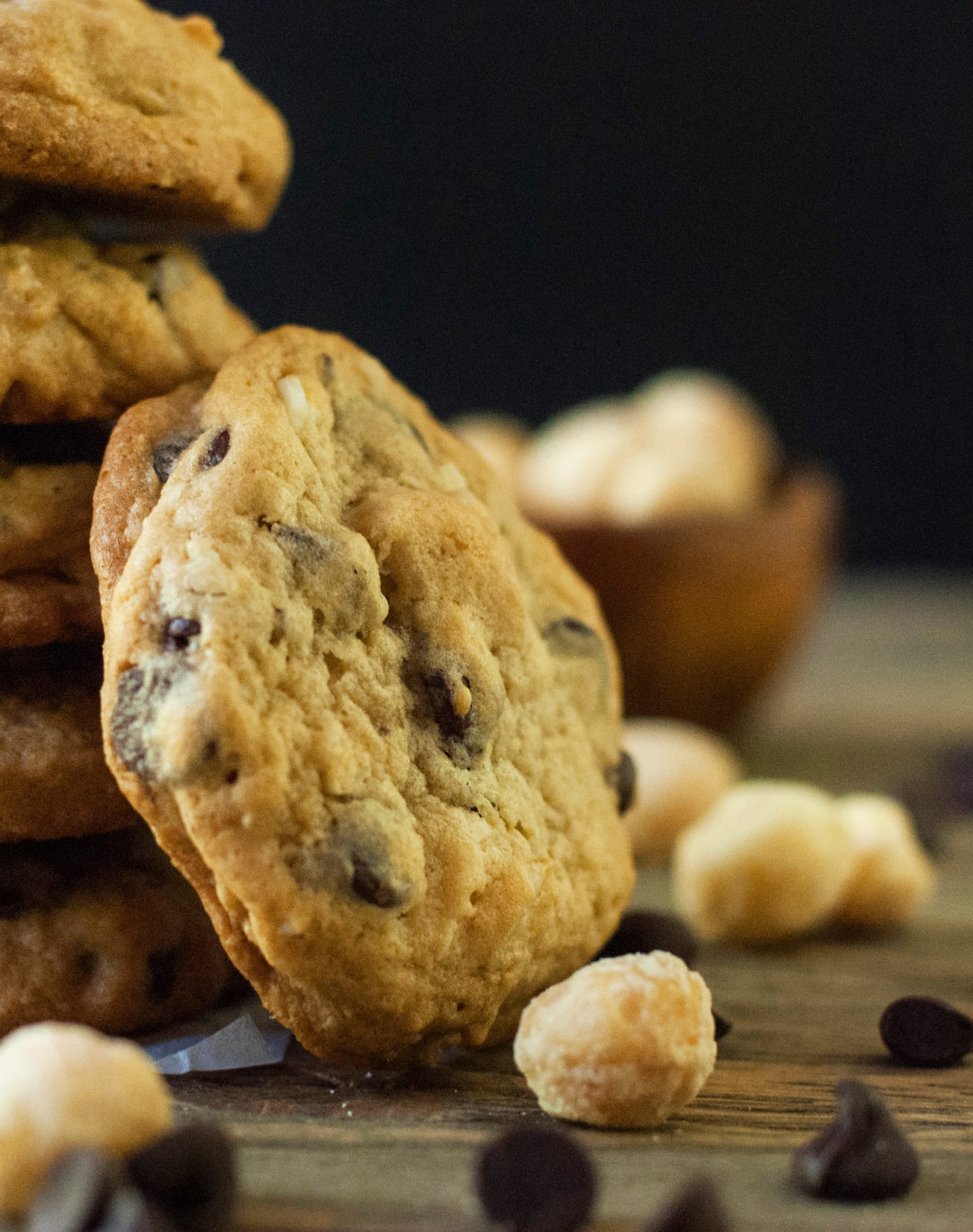


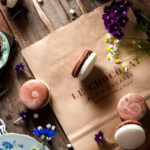
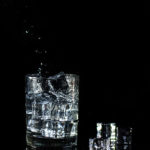
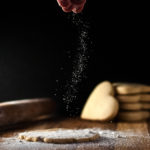
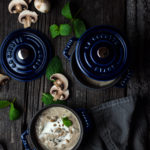
thank you for this!
You’re welcome. I hope it helps!
Pingback: Taking Christmas Photos – Cookies for England